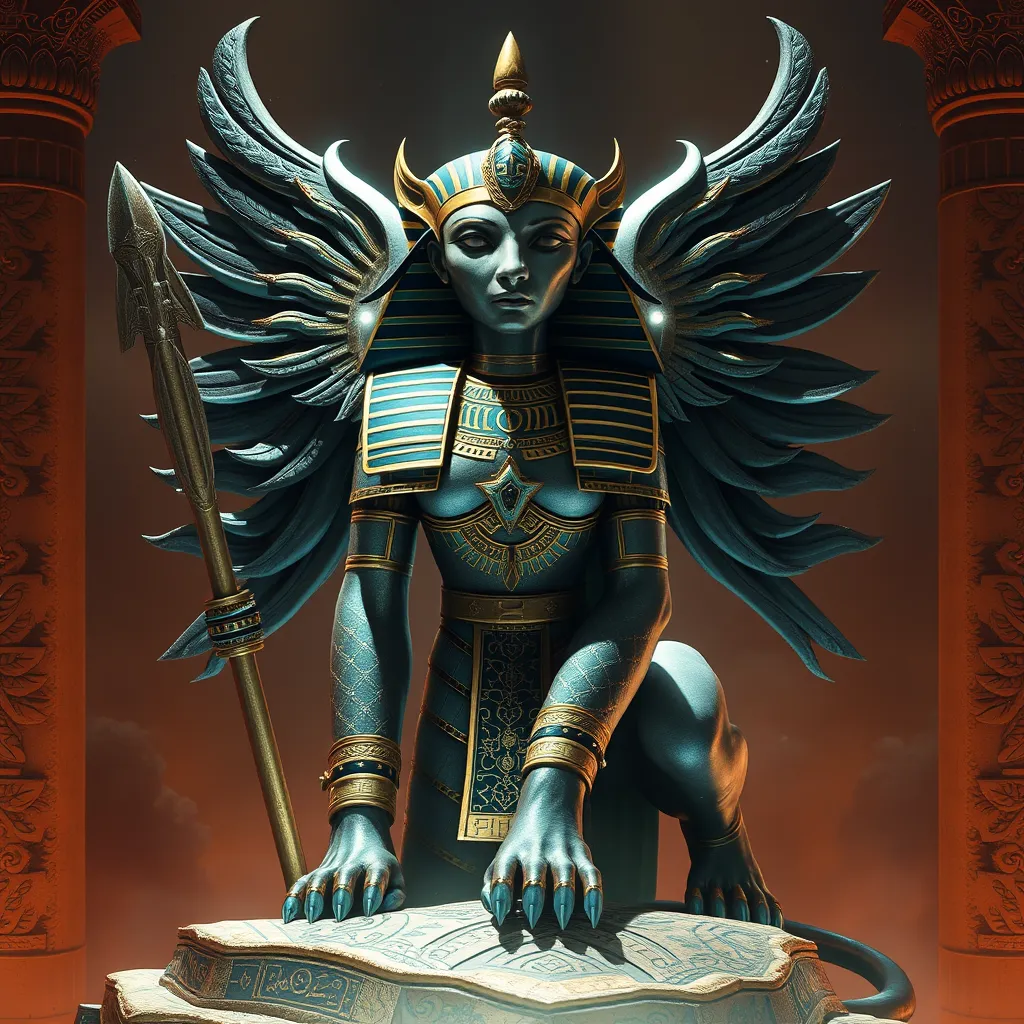The Wrath of Sekhmet: The Lioness Goddess and Her Role in Defending Egypt
I. Introduction
Sekhmet, one of the most formidable deities in ancient Egyptian mythology, is often depicted as a lioness or a woman with the head of a lioness. She embodies the dual aspects of ferocity and nurturing, representing both war and healing. This article aims to explore the complex role of Sekhmet in protecting Egypt, highlighting her significance in the pantheon of Egyptian gods.
II. The Mythological Origins of Sekhmet
A. Birth and lineage: Sekhmet as the daughter of Ra
Sekhmet is considered to be the daughter of Ra, the sun god, and was born from his fiery breath. According to myth, her fierce nature was a reflection of Ra’s power and wrath, intended to protect the world from chaos.
B. The creation myths surrounding Sekhmet
Various creation myths mention Sekhmet’s role in the cosmic order. One popular narrative describes how she was created to combat humanity’s rebellion against the gods. Her fierce disposition made her a perfect warrior, tasked with restoring order and balance.
C. Symbolism of the lioness in ancient Egyptian culture
The lioness symbolizes strength, courage, and protection in ancient Egyptian culture. Sekhmet’s fierce nature as a lioness represents her role as a guardian of the pharaoh and the land, reinforcing the idea that she is both a protector and a fierce avenger against threats.
III. Sekhmet as the Goddess of War
A. Depictions of Sekhmet in ancient texts and art
Sekhmet is prominently featured in ancient Egyptian texts and artwork, where she is often shown wielding weapons, such as a sistrum or a sword. These depictions emphasize her role as a goddess of war and protector of the realm.
B. Her role in battles and defense against invaders
In the context of warfare, Sekhmet was invoked for protection during battles. Pharaohs would pray to her for strength and victory against invading forces, as her fierce spirit was believed to inspire courage in warriors.
C. The significance of her fierce nature in warfare
Sekhmet’s nature as a fierce lioness was crucial in warfare, symbolizing the destructive power necessary to fend off enemies. Her wrath was feared, and it was believed that her presence could turn the tide of battle.
IV. The Balance of Destruction and Healing
A. Sekhmet’s transformation from a destroyer to a healer
Despite her fearsome reputation, Sekhmet also embodies healing and restoration. Myths describe her transformation from a destructive force to a nurturing goddess, highlighting her dual nature.
B. The duality of her powers: destruction vs. restoration
This duality is central to Sekhmet’s character. While she can bring devastation, she is also capable of healing the sick and wounded. This aspect of her character underscores the importance of balance in life and death.
C. Rituals and practices to invoke her protective and healing aspects
- Rituals: Special ceremonies were performed to invoke Sekhmet’s protective powers during times of war.
- Healing Practices: Priests would call upon her for healing rituals, often using amulets and offerings.
- Festivals: Celebrations were held in her honor, emphasizing both her warlike and healing attributes.
V. Sekhmet’s Influence in Egyptian Society
A. Her worship and the establishment of temples dedicated to Sekhmet
Sekhmet was widely worshipped throughout Egypt, with numerous temples dedicated to her, such as the one at Karnak. These temples served as centers for rituals and healing practices.
B. The role of priests and priestesses in Sekhmet’s cult
Priests and priestesses played a vital role in her worship, conducting rituals to appease her fierce nature and seek her blessings for protection and healing. They were seen as mediators between the goddess and the people.
C. Festivals and celebrations honoring Sekhmet
Festivals such as the Feast of Sekhmet featured music, dance, and offerings. These celebrations not only honored her but also reinforced the community’s reliance on her protective and healing powers.
VI. Artistic Representations of Sekhmet
A. Iconography of Sekhmet in sculpture and painting
Sekhmet’s iconography is rich and varied, often depicting her with a lioness head and a sun disk above it. Artists used her image to convey power and protection in their works.
B. The significance of lioness imagery in art
The lioness imagery serves as a potent symbol of strength and ferocity. Artists utilized this symbolism to evoke the protective qualities of Sekhmet, reinforcing her status as a guardian deity.
C. How artistic expressions reflect her power and influence
Artistic expressions of Sekhmet not only highlight her power but also reflect the societal values of ancient Egypt, emphasizing the importance of protection, strength, and healing within their culture.
VII. Sekhmet in Contemporary Culture
A. Modern interpretations and representations of Sekhmet
In contemporary culture, Sekhmet is often reinterpreted as a symbol of female empowerment, representing strength and resilience in the face of adversity. Her dual nature resonates with modern discussions about the complexities of femininity.
B. Her resurgence in popular culture and spirituality
Sekhmet has made appearances in various forms of media, from literature to film, often depicted as a powerful protector. Spiritual practices also incorporate her attributes, focusing on empowerment and healing.
C. The relevance of Sekhmet’s story in today’s world
The story of Sekhmet remains relevant as it speaks to the balance of power and nurturing, destruction and healing. In a world that often grapples with conflict and the need for healing, her myth continues to inspire.
VIII. Conclusion
Sekhmet, the Lioness Goddess, holds an essential place in the mythology of ancient Egypt as a fierce protector and healer. Her dual nature embodies the complexities of power and compassion, illustrating the balance necessary for the defense of the land. The legacy of Sekhmet endures, reminding us of the importance of strength and healing in our lives, and her story continues to resonate in contemporary discussions of power, protection, and the feminine spirit.




